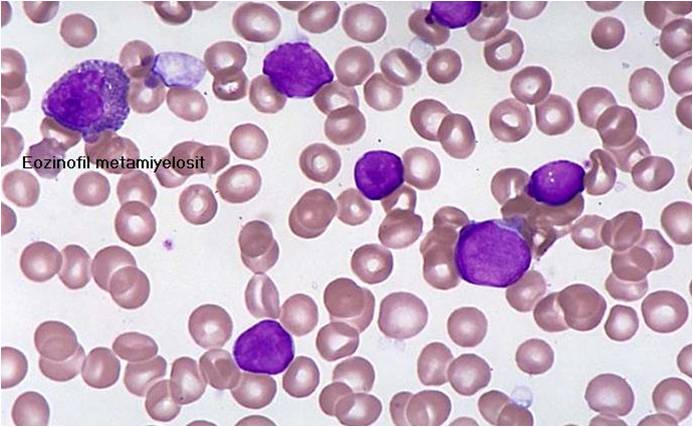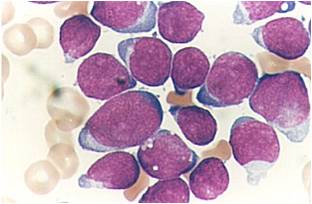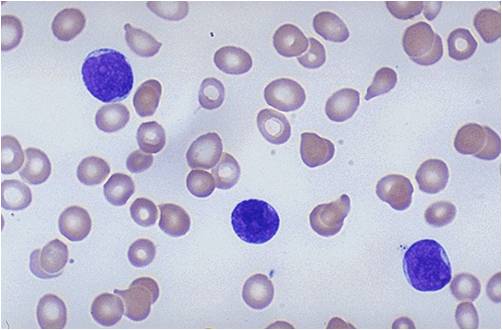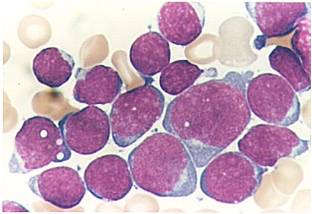Acute lymphoblastic leukemia classification
|
Acute lymphoblastic leukemia Microchapters |
|
Differentiating Acute lymphoblastic leukemia from other Diseases |
|---|
|
Diagnosis |
|
Treatment |
|
Case Studies |
|
Acute lymphoblastic leukemia classification On the Web |
|
American Roentgen Ray Society Images of Acute lymphoblastic leukemia classification |
|
Directions to Hospitals Treating Acute lymphoblastic leukemia |
|
Risk calculators and risk factors for Acute lymphoblastic leukemia classification |
Editor-In-Chief: C. Michael Gibson, M.S., M.D. [1] Associate Editor(s)-in-Chief: Raviteja Guddeti, M.B.B.S. [2]
Classification
Subtyping of the various forms of ALL used to be done according to the French-American-British (FAB) classification, which was used for all acute leukemias (including acute myelogenous leukemia, AML). As ALL is not a solid tumour, the TxNxMx notation as used in solid cancers is of little use.
The FAB classification is:
- ALL-L1: small uniform cells
- ALL-L2: large varied cells
- ALL-L3: large varied cells with vacuoles (bubble-like features)
Note: The recent WHO International panel on ALL recommends that this classification be abandoned, since the morphological classification has no clinical or prognostic relevance. It instead advocates the use of the immunophenotypic classification mentioned below.
Each subtype is then further classified by determining the surface markers of the abnormal lymphocytes, called immunophenotyping. There are 2 main immunologic types: pre-B cell and pre-T cell. The mature B-cell ALL (L3) is now classified as Burkitt leukemia/lymphoma. Subtyping helps determine the prognosis and most appropriate treatment in treating ALL.
The WHO classification is:
- B lymphoblastic leukemia/lymphoma
- B lymphoblastic leukemia/lymphoma (Not organ specific)
- B lymphoblastic leukemia/lymphoma with recurrent genetic abnormalities
- B lymphoblastic leukemia/lymphoma with t(9;22)(q34;q11.2), BCR-ABL1
- B lymphoblastic leukemia/lymphoma with t(v;11q23); MLL rearranged
- B lymphoblastic leukemia/lymphoma with t(12;21)(p13;q22) TEL-AML1 (ETV6-RUNX1)
- B lymphoblastic leukemia/lymphoma with hyperdiploidy
- B lymphoblastic leukemia/lymphoma with hypodiploidy
- B lymphoblastic leukemia/lymphoma with t(5;14)(q31;q32) IL3-IGH
- B lymphoblastic leukemia/lymphoma with t(1;19)(q23;p13.3) TCF3-PBX1
(Images shown below are courtesy of Melih Aktan MD, Istanbul Medical Faculty - Turkey, and Kyoto University - Japan)
 |
 |
 |
 |
 |
 |